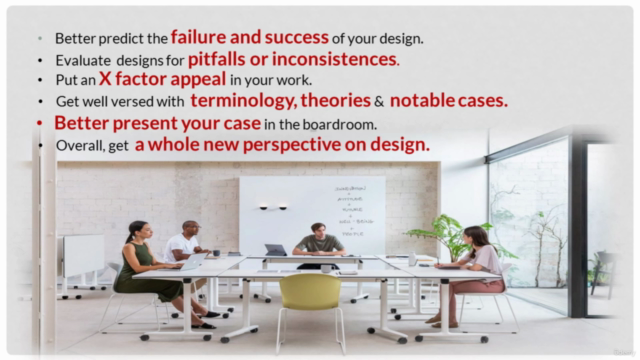Emotional Design Thinking & Design Psychology Masterclass

Why take this course?
🎓 Emotional Design Thinking & Design Psychology Masterclass 🚀 erh alt!
Course Headline: 🌟 A power-packed masterclass on emotional design thinking and design psychology from Starter to Guru! 🌟
Dive deep into the enchanting world of Emotional Design Thinking & Design Psychology with our comprehensive Masterclass. Tailored for designers, marketers, and creative minds yearning to infuse emotionally engaging strategies into their creations, this course promises to elevate your skills from Starter to Guru. Leveraging the latest research in emotional design, design thinking, and design psychology, this immersive learning journey is your key to unlocking the secrets of human emotions in response to design. 🖌️🚀
Course Description:
Embark on an awe-inspiring adventure where we dissect the very essence of how design interacts with human psychology and emotions. This Emotional Design Thinking & Design Psychology Masterclass is meticulously crafted to enlighten you on:
-
🧐 The Origins of Emotional Design and Psychology: Gain insights into the historical and psychological underpinnings that shape our emotional responses to design.
-
🤝 Human Connection to Design: Explore how humans forge connections with products and brands, and how this knowledge can be leveraged to create more meaningful experiences.
-
🛠️ Applying Theories in Practice: Engage with real-world cases and solutions that bring the lessons to life, preparing you to apply these techniques in your own designs.
Your Journey at a Glance:
-
Observation: Train your eyes to read beyond the surface. Think & Observe 10 designs around you and identify the emotional transferances they evoke. 🕒
-
Historical Case Study: Unravel the mystery behind the Ford Edsel's failure, through the lens of design technology. 🌍
-
Gender & Product Analysis: Investigate how products cater to various demographics and understand the psychological implications. 🏥
-
Design Briefs: Craft functional and psychological design briefs. Immerse yourself with detailed exercises for:
- An office table 🪖
- A home juicer 🔬
- A handbag ✨
Each task is designed to sharpen your analytical skills, encourage creative thinking, and develop your ability to design with emotion at the forefront. By the end of this course, you'll not only have a deeper understanding of how to connect with users on an emotional level but also a portfolio-worthy set of tasks that showcase your newfound expertise in Emotional Design Thinking & Design Psychology.
Are you ready to transform your design approach and create emotionally resonant work? Enroll now and join a community of forward-thinking designers who are reshaping the world through emotional intelligence in design! 🎓
Enroll today and unleash the full potential of your designs. With the Emotional Design Thinking & Design Psychology Masterclass, you'll be equipped with the knowledge and tools to craft experiences that truly resonate with users, propelling both your projects and your career to new heights! 🚀✨
Course Gallery




Loading charts...
Comidoc Review
Our Verdict
Emotional Design Thinking & Design Psychology Masterclass serves as a valuable starting point for understanding and integrating emotions and subconscious aspects in consumption behaviors. While there are opportunities for refining certain course elements, it offers a solid foundation for any designer looking to delve into psychological aspects of design.
What We Liked
- The course provides a comprehensive overview of emotional design thinking and design psychology, making it suitable for various types of designers and creative managers.
- It starts by exploring the origins of emotional design and human connection to design, then applies theories in practical design cases.
- The project combines diverse tasks that help reinforce video lectures' concepts, providing a hands-on learning experience.
- Real-life examples and case studies enhance understanding of theory application in practice.
Potential Drawbacks
- Some examples used could benefit from updates to better reflect current thinking and representation in design sectors, particularly in fashion, product, interior, and architectural design.
- Accents or speech patterns of the instructor might pose difficulties for some students in understanding certain words or concepts.
- Concepts and ideas presented may sometimes appear unconventional, leading to potential confusion for learners seeking traditional methods of emotional or psychological consumer behavior explanations.
- The use of sound effects could be reduced to minimize distraction during the learning process.